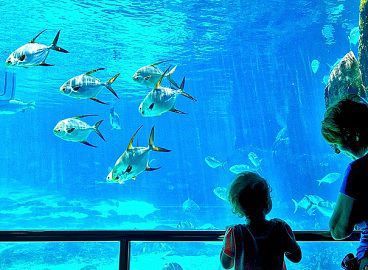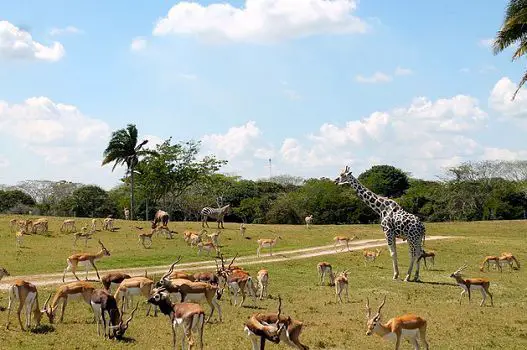The things which have life are living things, while the things which do not have life are non-living things. But if we try to find out the matter in deep, we will notice many important aspects on which we can differentiate living and non-living things.
The most important point is that living things can reproduce and can give birth to the young of their kind, which non-living things cannot do. This is the era of machines and electronics, most of the things we use are non-living. We can observe that these items work according to our will and not on their own. While living things even small unicellular organisms, insects, animals or giant-like whales can work according to their own need.
It is easy to tell the difference between these two things, as we remain surrounded by both of them. In this section, we will focus on the points which make variations between living and non-living things.
Content: Living Vs Non-Living Things
Comparison Chart
| Basis for Comparison | Living Things | Non-Living Things |
|---|---|---|
| Meaning | Things or the organisms, which possess life in it and can grow and to reproduce to give birth to the young ones is known as the living things. | Non-living things do not possess life, neither can reproduce and give birth of the same kind. |
| Nutrition | Living things requires nutrition and energy to grow and to do work. | Non-living things do not require nutrition and energy to grow. |
| Lifespan | Living things like plants, animals, insects, etc. have a certain age limit, till which they are alive. | Non-living things do not have any lifespan. |
| Biological activities | Living things perform various biological activities such as respiration, breathing, digestion, excretion, metabolism, etc. | These activities are not performed by non-living things. |
| Respond to stimuli | Living things respond to stimuli and react to all kind of activities. | Non-living things do not respond to the stimuli. |
| Reproduction | Living things can reproduce and give birth to the young ones of their kind. | Non-living cannot reproduce or give birth. |
| Movement | Living organisms can move from one place to another (exceptions are plants and trees). | Non-living things do not show any movement on their own. |
| Adaptations and Evolution | They show adaptations and bring evolution in their next generation with the changing environmental conditions. | Non-living things do not show any changes like evolution or adaptations. |
| Examples | Humans, cats, dogs, insects, plants, microorganisms, etc. | Tables, chairs, cars, buses, buildings, machines, etc. |
Definition of Living Things
Every living organism can grow up to a certain size, and they have a lifespan after which they die. Mainly the body of a living organism consists of cells which are organized to make different functional body parts or structures.
The body of the living thing performs various metabolic activities. This may include such as
- Nutrition (intake of useful and nutritive products)
- Assimilation
- Digestion
- Excretion of waste products
- Respiration
Living things are sensitive and respond to stimuli, and they can take decisions and work according to the situation. Living organisms can give birth to young ones of their kind.
Definition of Non-Living Things
Non-living things do not have any cellular component, no protoplasm, etc. They do not respond to any stimuli, and they cannot take action on their own. Of course, we can say that these days many gadgets are sensitive when touched or respond accordingly. But we should be aware that even these gadgets are designed by humans (living objects).
But still, if we look upon the other objects such as bottles, tables, chairs, windows, and doors, they still seem to be lifeless, motionless. Rather when we use or push these things that time only they work or move.
Non-living objects do not have the thinking ability to manage things and matters. And they are just simple machines which need cleaning and servicing. We have to fuel them properly so that they can provide their service for a long duration.
Key Differences Between Living and Non-Living Things
Following are the key differences between the living and the non-living things:
- Things or the organisms, like animals, insects, microorganisms, plants, etc., which possess life in it and can grow and to reproduce to give birth of their known as the living things. On the contrary non-living things like chairs, tables, houses, books, utensils, etc. do not possess life, neither can reproduce.
- Living things need nutrition and energy to grow and to do work, whereas non-living things do not require nutrition and energy to grow, they cannot perform any activity on their own.
- Living things like plants, animals, insects, etc. have a certain age limit, after which their cellular machinery gets slow down, and they die, but this is not the case with non-living things as do not have any lifespan.
- Various biological activities are performed by living organisms such as respiration, breathing, digestion, excretion, metabolism, etc., as non-living things do not have cells or any life, they do not perform such activities.
- Living things respond to stimuli and react to all kind of activities. Non-living things do not respond to the stimuli.
- Living things can reproduce and give birth to the young ones of their kind and thus increase the population of their species, on the other hand, non-living cannot reproduce or give birth.
- Living organisms can move from one place to another (exceptions are plants and trees), whereas non-living things do not show any movement or such activities on their own.
- Living things show adaptations and evolution with the change in the environment in which they live, and this is not with the non-living things.
Conclusion
In this content, we came to know about the living and the non-living things and how they variate. Though there are few things in common like both occupy space and have mass, forces can be applied on both and like the living things require energy to do work, while non-living things like machines need fuels to do work.




Leave a Reply